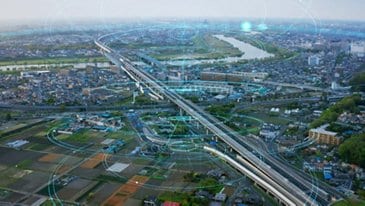
Hidden Level joined the Uber Elevate ecosystem as a provider of advanced sensors and airspace monitoring capabilities.
Uber Elevate added sensor and data processing company Hidden Level to its ecosystem to further its development of safe, reliable low-altitude operations in the national airspace.
Through the non-exclusive partnership, Uber intends to access data from Hidden Level's custom-built sensors, placed strategically around cities, as a supplemental data source for its Elevate Cloud Services suite of technologies that will undergird its future network of scalable urban airspace operations.
"Our partnership with Hidden Level seeks to enhance our ability to demonstrate the ways in which Uber Air will meet industry safety standards, and we look forward to collaboration in the years ahead," said Tom Prevot, director of airspace systems at Uber Elevate.
Founded in 2018, Hidden Level is a venture-backed company seeking to install, operate and maintain its proprietary sensor infrastructure in metropolitan areas through a data-as-a-service model that will help enable drone delivery, urban air mobility, airspace security and other similar services by detecting and tracking cooperative and noncooperative airspace traffic. The company raised $3.6 million in seed funding in November 2019, according to Crunchbase.
Founders Gary Domincos, Jeffrey Cole and Kevin Nasman previously worked on a number of commercial and military sensor projects, including the development of Gryphon Sensors' R1400, counter-UAS systems of systems, and ground moving target indicator (GMTI) radar technology, among other projects. Hidden Level has also participated in standards development through RTCA SC-228 – creating minimum performance standards for UAS around detect-and-avoid and command-and-control – as well as ASTM's working group on remote ID.
"From our lessons learned, we have built world-class sensors with tremendous detection and tracking capability at long range," a representative for Hidden Level told Avionics. "Depending on the metropolitan topography, on the order of 15 installation sites can cover up to 170 square miles."
Hidden Level is engaged on Federal Aviation Administration (FAA) pilot programs on beyond visual line of sight (BVLOS) linear infrastructure inspection and airport drone security. Members of the company have also worked with NASA on early unmanned traffic management (UTM) concept development, safety cases and technical capability exercises.
Like other airspace service providers, Hidden Level is closely watching how regulators intend for UAM and other low-altitude operations to integrate into the airspace. The FAA recently released its first draft of a UAM concept-of-operations, which suggests evolving current helicopter routes into "UAM Corridors" that can define an evolving set of performance and equipage requirements to support higher tempo operations over time.
"Hidden Level operates as an SDSP under the FAA's proposed CONOPS, providing our airspace data to [UAM service providers] and UAM operators such as Uber," a company representative told Avionics. "We want to ensure that corridors that are approved for flights remain clear of non-cooperative airspace participants, but if they do appear contingencies can be best planned given the comprehensive picture from Hidden Level's Airspace Monitoring Service. Other cooperative aircraft can also be checked against to ensure that their positional reports reflect their actual position in the sky, providing a safety net for potential off-nominal activity."
Hidden Level is currently working through testing, active rollout and planning with early customers and partners in metropolitan areas on both the east and west coasts of the United States, with public announcement slated for later this year.
